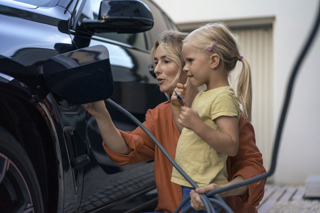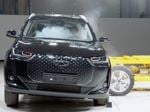By Philip Nothard
The cars we buy and how we buy them are having a profound impact on the new and used market. The pace of change is accelerating and will present challenges and opportunities to the industry.
Digital issues continue to dominate the agenda and from new sales to the used market, the supply chain is being compressed. Ownership cycles are shortening and the ‘pay to drive’ rather than ‘pay to purchase’ ownership model is achieving dominance across the new and young used market.
This ‘iPhonification’ of the motor industry is changing the way we own cars, with far-reaching implications for the supply chain. More than 80% of new vehicles are purchased with forms of personal contract purchase (PCP) or personal contract hire (PCH). There is evidence from dealers to suggest that PCP penetration has grown on used cars to more than 40% and it continues to rise in double digits a year.
The net effect is we are changing vehicles more often. Dealers are not looking to grow stock levels, but rather increase used car stock turn.
The dominance of digital technology
It is likely that digital technology will give dealers more immediate access to larger used car markets.
The UK vehicle parc is predicted to expand to more than 32 million. Global online car sales are estimated to increase eightfold by 2025 to almost £3.1 billion, according to a recent industry report by Frost & Sullivan. This would account for nearly one in five new car sales. Used sales are likely to follow the same trajectory. Online sales are forecast to account for a quarter of the British new car market by 2025.
Digital marketing will continue to dominate customer relationships, but dealerships will continue to evolve. Consumers can expect a richer, more multi-media experience.
Advances in video and vehicle imaging will give consumers access to a national choice of vehicles. The ability to explore finance options throughout the purchase process will create a more personalised service. We already see virtual reality technology and 360-degree imaging being implemented in the retail environment across all motor retailers, with independent operators often more agile and able to be early adopters.
A study by GfK Automotive found about a third of British motorists under 35 would buy a car online, while 80% have researched the model they want before they visit a dealership.
Driver data will grow in importance
Manufacturers and retailers own a wealth of data on the driver and this will lead to closer relationships throughout the vehicle lifecycle. Smarter customer relationship
management will pre-empt the driver’s requirements and drive a more direct sales relationship. For instance, the birth of a child or moving house could trigger a sales conversation.
The rise of alternative-fuelled vehicles will continue. Dutch politicians recently voted through a motion calling on the country to ban sales of new petrol and diesel cars starting in 2025. While the motion has yet to become legally binding, it sets a direction of travel for Europe.
The adoption of electric vehicles continues apace in the UK. It is probable that the petrol and diesel vehicle share of the market will decline as alternative fuel vehicles rise. As consumer acceptance and demand increases, residual values of used EVs, currently low when compared with petrol or diesel equivalents, could normalise.
Manufacturers recognise the trend and Volvo has set itself an ambitious sales target of hitting 1m electric, hybrid and plug-in hybrid cars by 2025 – and has pledged to offer at least two hybrid models of every model.
Hydrogen cars will hit the mainstream. The UK Government recently announced funding to support the introduction of this technology. Sales of these vehicles, when used, are likely to remain in the dealer network.
The used car market will evolve alongside ‘pay to use’ finance models. Manufacturers and dealers will have a closer relationship to the motorist and the vehicle and it is likely that used car programmes will expand.
Digital technologies will enable retailers to access stock at the de-fleet stage and web-based platforms could create a virtual and real-time marketplace.
Cars are also becoming more connected and the possibilities are endless, from advance warning of adverse conditions to live updates on everything from parking spaces to servicing and maintenance.


















Login to comment
Comments
No comments have been made yet.